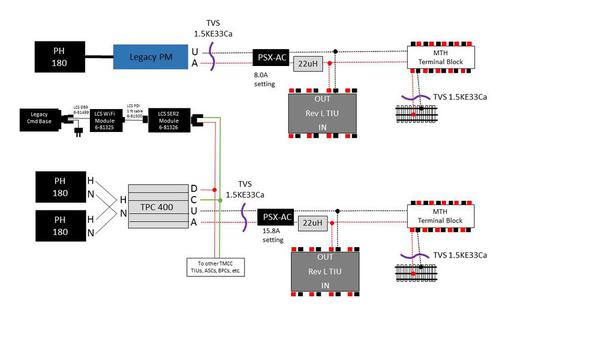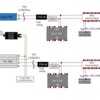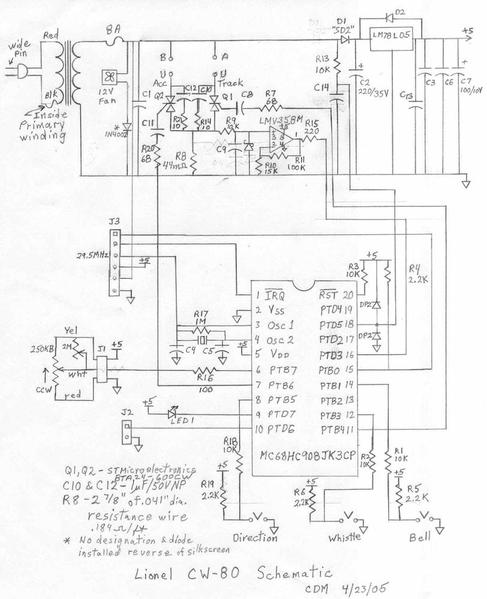How do you guarantee you will know. I have seen plenty of loco with fused wiring either in the tether or at the engine. Motor overload, and power.
If you're looking for guarantees, that costs extra. Let's put it another way, are you guaranteeing that a TVS will be of no benefit?
5V boards are a perfect example of a hi current failure that would simulate a TVS short. They can hold anywhere from 4 -9 amps. Well below a trigger for some transformers.
The 5V board shorts aren't directly across the pickup wires, there is some circuitry between the short and the pickups. Also, we don't really know what the internal resistance at current is of the shorted component(s). This is apples and oranges.
A engine sitting on a powered siding as an example.
Frankly we don't have proof they make a difference one way or the other. Though having the one at the transformer makes sense.
I get that you doubt it could make a difference, but that's not been my experience in a far more critical environment than model trains. If it's not important, why bother with the one at the transformer?
The tech note is really apples to oranges. They are talking about protecting discrete components on a PCB. TIU rev L with the SMD TVS added to protect a specific chip is a prime example.
Typically, you're protecting the components closest to the external environment, it's unlikely a power surge is going to pass by half a dozen parts and zap one in the middle of the circuit. What tech note are you talking about?
I have one customer with TVS installed in the engine that lost a Audio amp to a derailment. So he is questioning the benefit.
I fail to see how this has anything to do with the TVS or it's behavior. Without knowing what caused the failure, that's just speculation. After all, you have replaced plenty of audio amps for people without TVS protection, right?
Folks are picking clamping specs with no specific data behind it. TIU have 33, 39, 51 V TVS depending on model and location. Transformers use 51.
I'm picking the ones for this environment based on the expected maximum track voltage and the specifications of the TVS.
But hey, it is a sellable insurance policy. G
Apparently, not to you.  You're obviously allowed to disagree, but nothing you presented here has made a case against the TVS, at least IMO.
You're obviously allowed to disagree, but nothing you presented here has made a case against the TVS, at least IMO.









